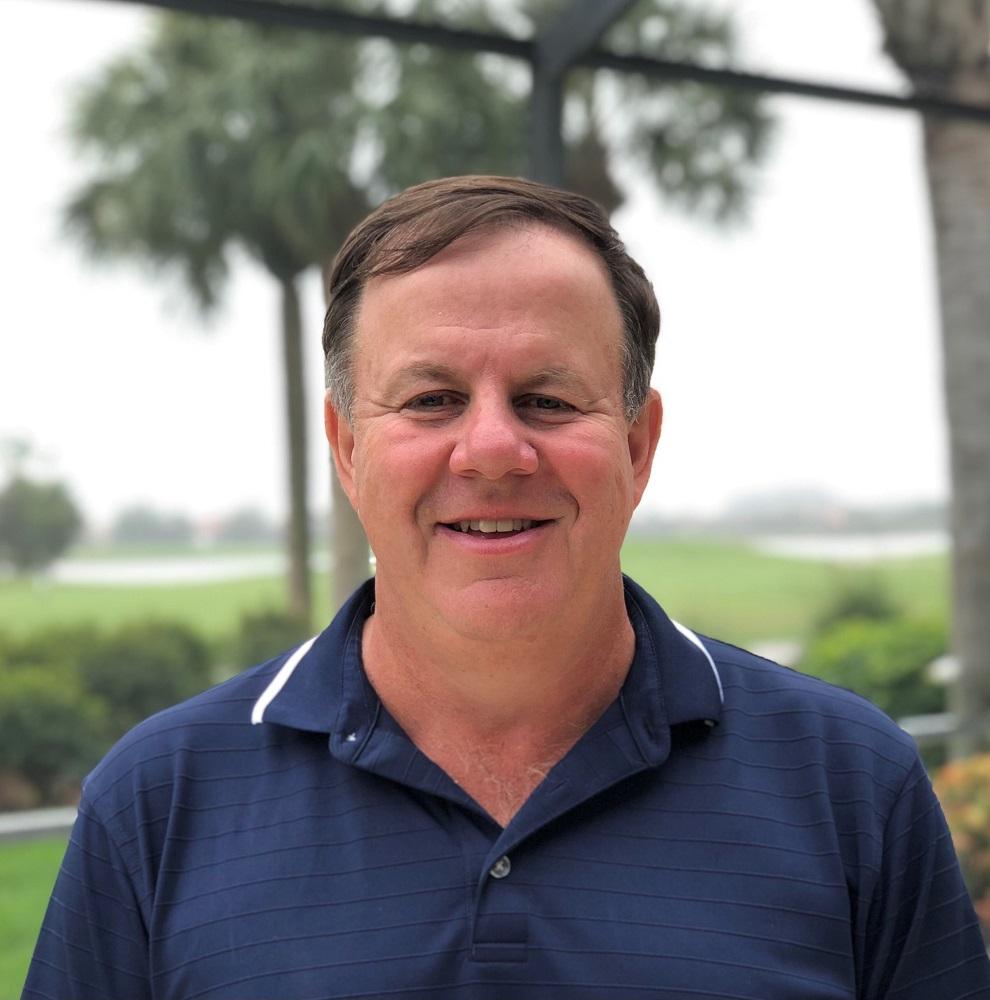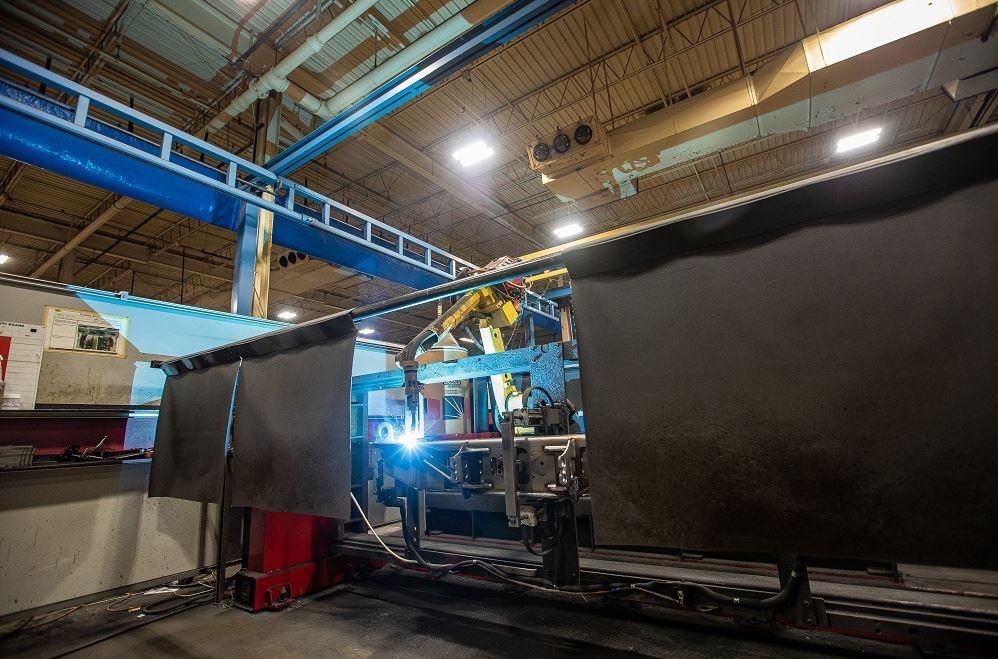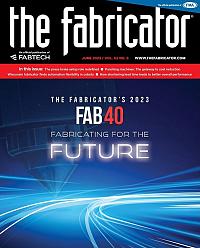Senior Editor
- FMA
- The Fabricator
- FABTECH
- Canadian Metalworking
Categories
- Additive Manufacturing
- Aluminum Welding
- Arc Welding
- Assembly and Joining
- Automation and Robotics
- Bending and Forming
- Consumables
- Cutting and Weld Prep
- Electric Vehicles
- En Español
- Finishing
- Hydroforming
- Laser Cutting
- Laser Welding
- Machining
- Manufacturing Software
- Materials Handling
- Metals/Materials
- Oxyfuel Cutting
- Plasma Cutting
- Power Tools
- Punching and Other Holemaking
- Roll Forming
- Safety
- Sawing
- Shearing
- Shop Management
- Testing and Measuring
- Tube and Pipe Fabrication
- Tube and Pipe Production
- Waterjet Cutting
Industry Directory
Webcasts
Podcasts
FAB 40
Advertise
Subscribe
Account Login
Search
2023 FAB 40: In-house training foundational for SteelCraft’s growth
Metal fabricator maintains in-house welding and bending school even after major rebrand
- By Tim Heston
- June 9, 2023
- Article
- Shop Management

A welder at SteelCraft welds an assembly. The fabricator promotes comprehensive welder training, launching an in-house welding school in 2017. Images: SteelCraft
This year, Steel Craft Corp. of Hartford (SteelCraft) underwent a rebranding. Like other organizations built through acquisition in metal manufacturing, the Hartford, Wis.-based company had been doing business under its legacy brands—not just SteelCraft but also Capitol Stampings and Hartford Finishing. In 2023, the $170 million organization consolidated everything under a single name.
The recent change at SteelCraft, No. 11 on the 2023 FAB 40 list, exemplifies the one many fabricators in this business go through: the transition of ownership, from family to outside investor—in this case, private equity. The Wendorff family owned SteelCraft since 1976. They launched a separate finishing company in 1983 and in 2005 purchased Capitol Stampings. By the late 2010s, brothers Gary and Gene Wendorff were looking to step back from the business, and in 2019 they did just that, selling the fabrication, stamping, and finishing businesses to MiddleGround Capital, a private equity group in Lexington, Ky., founded by former Toyota managers and engineers. In 2021, Kevin Stevick—an executive with a long history managing PE-owned manufacturing firms—became SteelCraft’s president and CEO.
“I started my career with Corning Glassworks, and they were an early adopter of Deming, PDCA [plan, do, check, act], and total quality management. It’s about data-driven decision-making and getting people close to the shop floor involved with those decisions.”
Today, the organization faces many of the same challenges other FAB 40 companies face: labor shortages, wage inflation, and increased demand for manufacturing flexibility. To address these issues and more, Stevick and other leaders have put together a handful of so-called “focus teams” that work through people, process, product, and leadership issues throughout the organization. “Those teams really have driven success in this business over the past 18 months.”
A keystone to all this remains the company’s in-house training and mentorship programs. In essence, business leaders scrutinized the new employees’ experience. Today, teaching someone a specific task and then letting them “have at it” doesn’t help employee retention, especially when those new employees have plenty of options. The teaching needs to be more comprehensive and continual, especially for specialized skills like bending and welding.
From this came the fabricator’s investment in training. On a regular basis, shop leaders send welders and operators back to school—the company’s own school, that is.
Technology Investment and Training
At this writing, SteelCraft’s certified weld inspectors (CWIs) are developing standard processes for the company’s new hand-held laser welding system, a technology recognized for its speed and, not least, its ability to reduce or eliminate the need for postweld grinding. They’re working to ensure operator safety, considering the hazards of 1-µm-wavelength light from the fiber laser. They’re also documenting the training criteria to be used within SteelCraft’s in-house weld school.
“This is an integral part of ‘train the trainer,’” said Ed White, senior director of corporate sales. He added that without documented training practices to cover operation and (just as critical) maintenance of new equipment, new technology investments fall short.
Today, SteelCraft operates two in-house schools, one for welding and another for press brake operation. “We first launched the weld school in 2017,” said White, who launched his career decades ago as a welder before moving on to operations, estimating, and sales management. “Every six weeks, we train a crew of five welders. We pay them during training and [provide] full benefits. Once they’re trained, they go work in the shop and have a CWI as a mentor. We never just train people and send them off on their own. And if they need more training, they return to the school to receive that training. No one should feel like they’re lost in the shuffle.”
Stevick added that the schools have boosted cross-training, introducing new career paths to people who may have never thought to operate a brake or pick up a welding gun. “We’ve taken fork truck drivers and given them a new career by sending them to the welding school.”

Kevin Stevick, who has a long history managing PE-owned manufacturing firms, became SteelCraft’s president and CEO in 2021.
After finding initial success with the welding school, the fabricator launched something similar for press brake operators. They don’t just learn how to push buttons and bend a particular job. They learn the fundamentals of air forming, how to set up a machine, and how to choose the right tools for the job.
“We literally have a small electric brake press that we can move around to different areas, to show each trainee various concepts without interrupting production,” White said, adding that it’s small enough to be put on a platform that a fork truck can lift and move.
Using a new press brake for training is unconventional, but as White explained, SteelCraft considers it a good use of a capital investment. The machine helps those unfamiliar with bending (which, for those new to the industry, is nearly everyone) to visualize the process. Interacting with a modern control, they learn how to program and build a bend sequence from scratch. And yes, during production they’ll be downloading programs, not developing them on the production floor; after all, the customer’s paying for formed parts, not time-consuming programming that ties up a productive machine. Still, understanding the fundamentals is as important as ever—hence the value of dedicating that small mobile press brake for training.
“This way, they have the feel and touch and understand what’s happening,” White said, “even though when they set up a job in production, the backgauge positions are already there and the control tells them which punches and dies to use.”
The training complements another education initiative, launched several years ago by the previous owners, called GPS Ed. “We’re partnering with local trade schools and high schools to provide an alternative high school experience. They use our facilities,” Stevick said. “They come on-site. They go to class. And upon graduation, they either come to work for us or find someplace else to work where they can take their new skill sets.”
Lean Boot Camps
Considering where SteelCraft’s owners at MiddleGround come from (Toyota), it’s no surprise that kaizen events have become institutionalized across SteelCraft. One is held nearly every week. MiddleGround, however, goes a step further.
“They hold boot camps, and they’ll bring in people from other companies they own,” White said. “We’ll all work as a team and implement new ideas, be it a new cellular layout or anything else that would help us improve. Most important, everyone is involved. In a week, they work from 6 in the morning until 8 at night, to hit an area hard and create the most amount of efficiency they can out of a process.”
Being a high-product-mix fabricator, SteelCraft isn’t Toyota, but of course lean manufacturing has plenty of tools that apply. “The underlying principles are the same,” White said. “You need to choose the parts of lean that work with the kind of manufacturing we do.”
He recalled a kaizen performed around a welding robot cell that addressed a constraint in tacking, fixturing, and other prep work before the welding cycle. At times, the prep took so long that the robot sat idle. The operation wasn’t as efficient as it could have been.
“After the kaizen event, we ended up adding another station where someone else performs a lot of the prep work,” White said. “Yes, we added another person, but the increased throughput paid for that and then some.”

A robotic weld cell processes a part at a SteelCraft plant. The fabricator is deep into automated welding, but not every weld can be automated—hence the importance of welder training.
Other improvement projects spurred the use of visual management tools, so everyone knows what job is next and where it’s headed; as well as staging strategies to ease changeover from one job to the next. After all, the longer and more variable setups are, the larger work-in-process inventory buffers need to be, which in turn extends overall lead time—something that modern fabricators really can’t afford.
“All of this is extremely important when thinking about our future,” Stevick said. “Whether it’s the training schools, improvement projects, increases in wages, enhancing our benefits ... We like the position we’re in right now, and we’ll see where the future takes us.”
The fabricator is amid some significant business development efforts, with new opportunities in autonomous vehicles, military work, and rec vehicle markets. This year alone, the company has increased its workforce by about 15%. Sources added that, although the bump in the wage structure helped, the company’s training initiatives remain key to employee retention. And like most fabricators, SteelCraft is diving deep into automation.
For instance, in July the company expects delivery of a TRUMPF TruLaser Center 7030, a fiber laser with unique automated parts offloading technology. But again, automating without a trained and engaged workforce doesn’t solve a labor shortage problem.
As Stevick explained, SteelCraft has long-term growth plans that involve expanding the Midwest fabricator’s geographic footprint to the Southeast and Southwest. Wherever the company expands, training and mentorship will be part of the equation.
Published every June, the FAB 40 features some of the largest custom metal fabricators in the United States. Click here to learn more and to see this year's ranking.
About the Author

Tim Heston
2135 Point Blvd
Elgin, IL 60123
815-381-1314
Tim Heston, The Fabricator's senior editor, has covered the metal fabrication industry since 1998, starting his career at the American Welding Society's Welding Journal. Since then he has covered the full range of metal fabrication processes, from stamping, bending, and cutting to grinding and polishing. He joined The Fabricator's staff in October 2007.
Related Companies
subscribe now

The Fabricator is North America's leading magazine for the metal forming and fabricating industry. The magazine delivers the news, technical articles, and case histories that enable fabricators to do their jobs more efficiently. The Fabricator has served the industry since 1970.
start your free subscription- Stay connected from anywhere

Easily access valuable industry resources now with full access to the digital edition of The Fabricator.

Easily access valuable industry resources now with full access to the digital edition of The Welder.

Easily access valuable industry resources now with full access to the digital edition of The Tube and Pipe Journal.
- Podcasting
- Podcast:
- The Fabricator Podcast
- Published:
- 04/16/2024
- Running Time:
- 63:29
In this episode of The Fabricator Podcast, Caleb Chamberlain, co-founder and CEO of OSH Cut, discusses his company’s...
- Industry Events
16th Annual Safety Conference
- April 30 - May 1, 2024
- Elgin,
Pipe and Tube Conference
- May 21 - 22, 2024
- Omaha, NE
World-Class Roll Forming Workshop
- June 5 - 6, 2024
- Louisville, KY
Advanced Laser Application Workshop
- June 25 - 27, 2024
- Novi, MI































